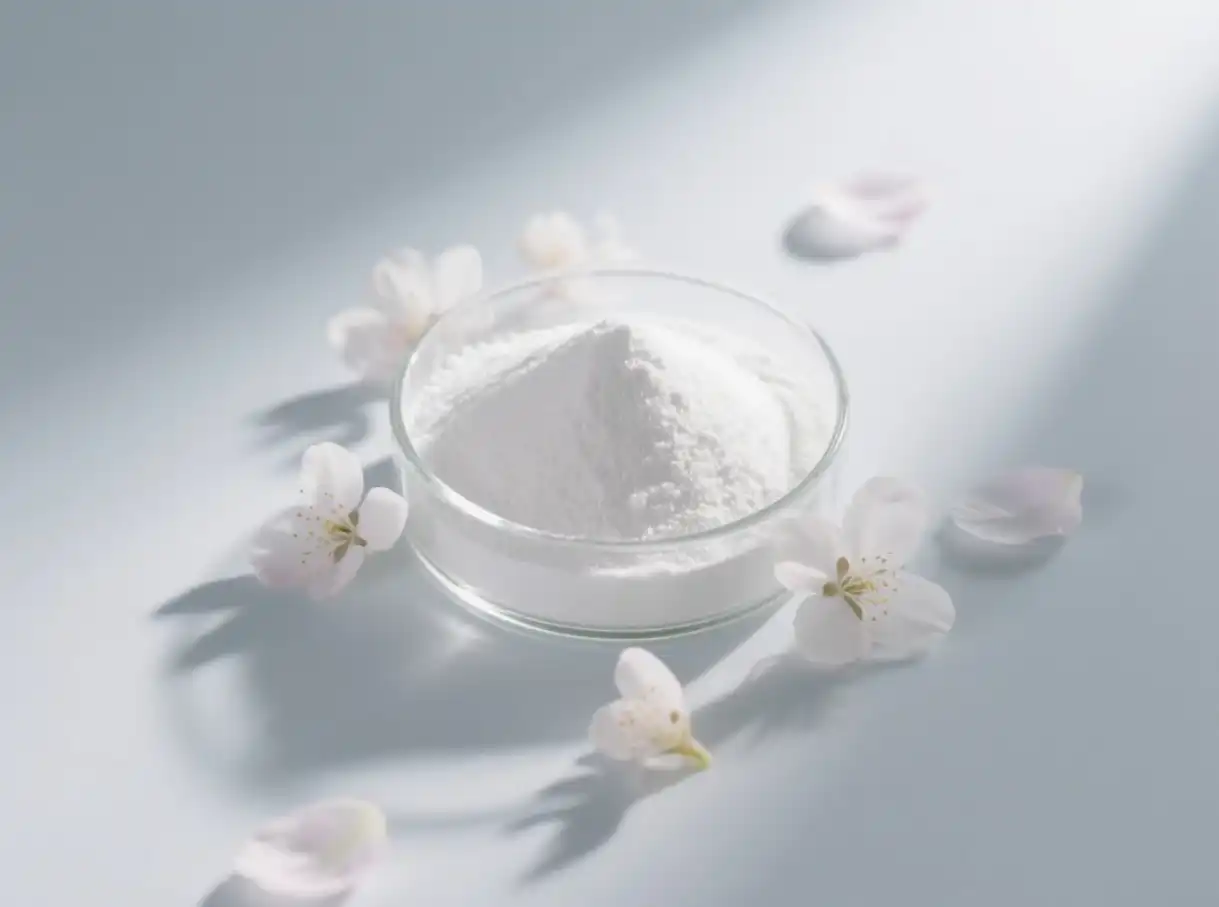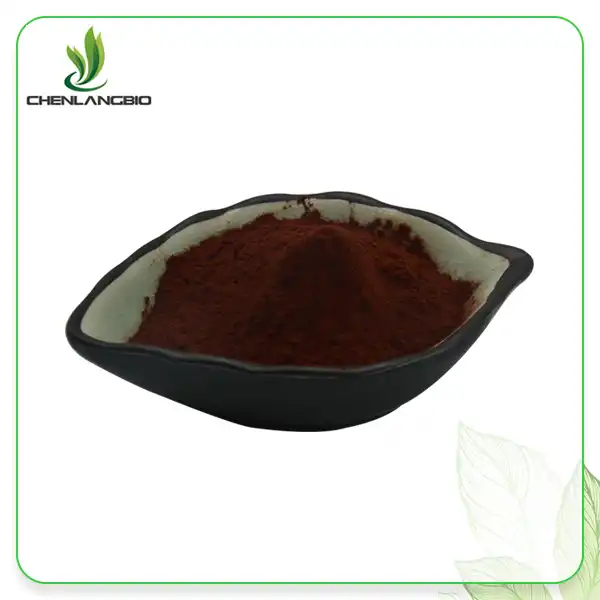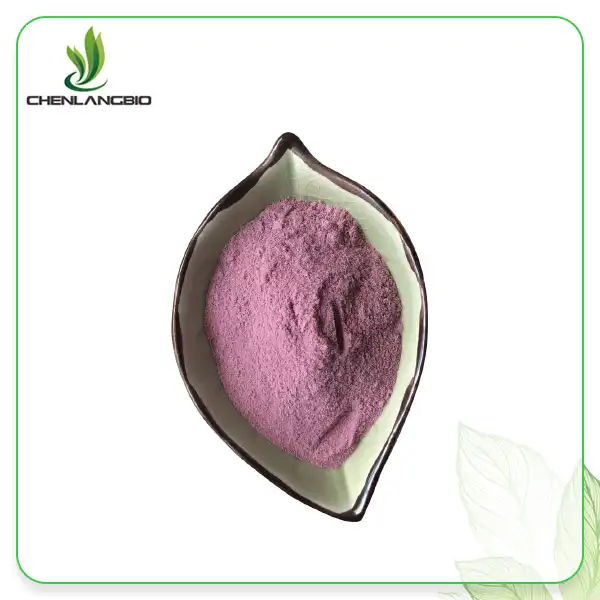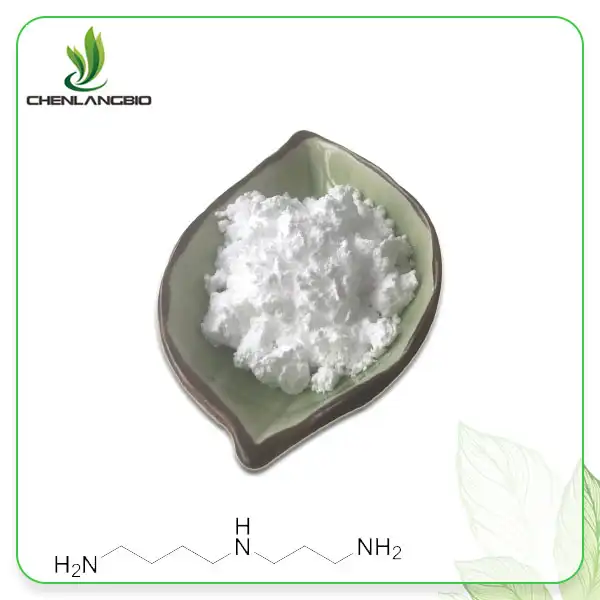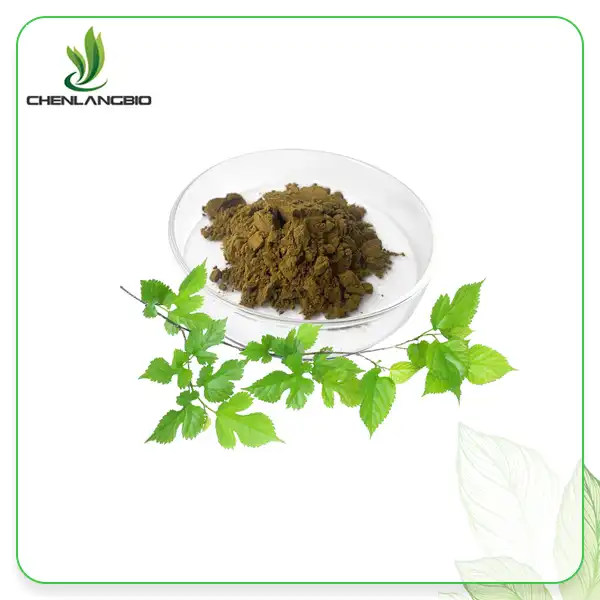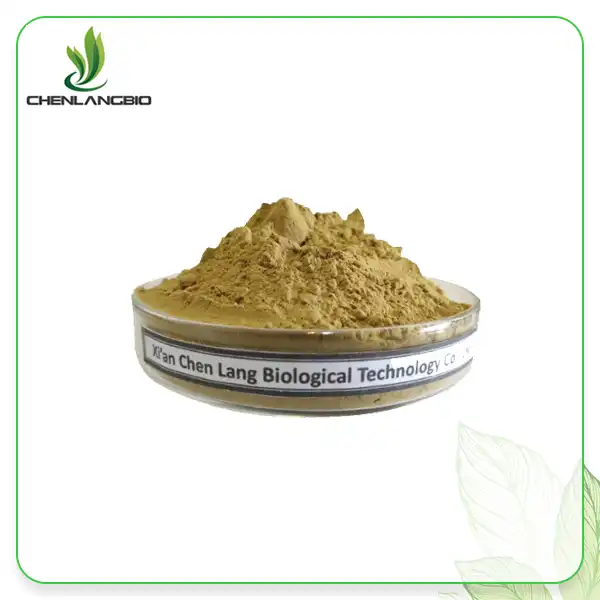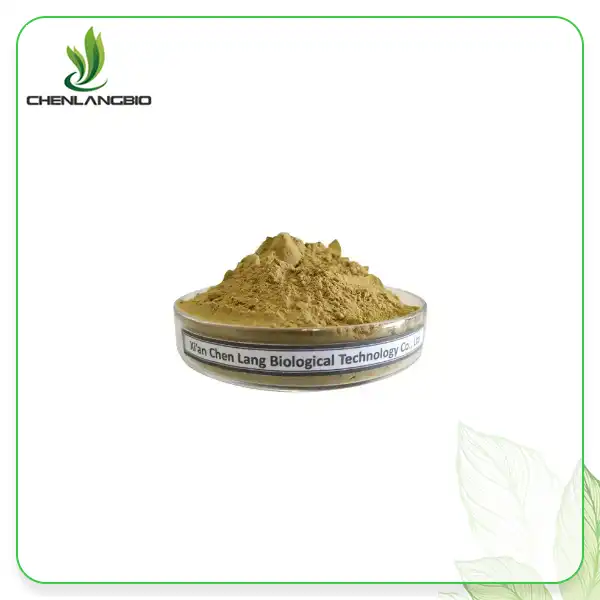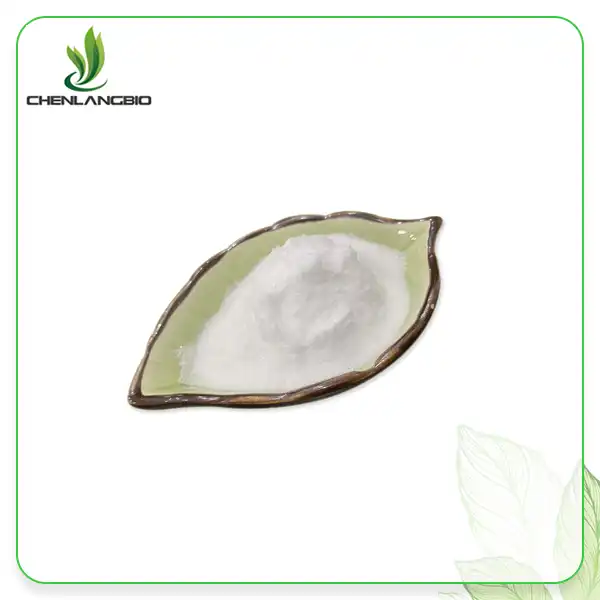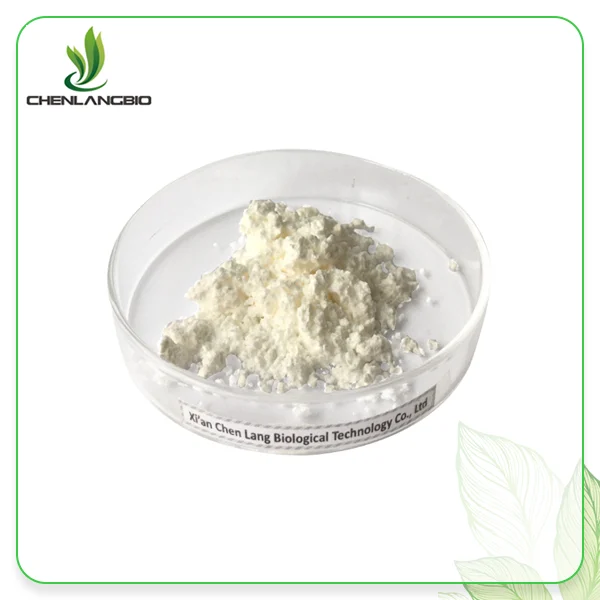How Do I Use Kojic Acid Dipalmitate in My Skincare Routine?
2025-06-12 08:43:42
Are you looking to brighten your complexion and tackle uneven skin tone? Kojic acid dipalmitate might be the game-changing ingredient your skincare routine needs. This powerful derivative of Kojic Acid offers enhanced stability and effectiveness for addressing hyperpigmentation concerns. Unlike regular Kojic Acid, this oil-soluble version integrates seamlessly into various skincare formulations, making it an excellent choice for those seeking a more radiant, even-toned complexion without the instability issues of traditional Kojic Acid.
Understanding Kojic Acid Dipalmitate and Its Benefits
The Science Behind Kojic Acid Dipalmitate
Kojic Acid Dipalmitate, chemically known as 2-palmitoyloxymethyl-5-palmitoyloxy-γ-pyrone (CAS No: 79725-98-7), represents a significant advancement in skin-brightening technology. This derivative differs from regular Kojic Acid through its molecular structure, which includes two palmitic acid chains attached to the base Kojic Acid molecule. This modification transforms the water-soluble Kojic Acid into an oil-soluble compound with a molecular weight of 618.9. The scientific importance of this transformation cannot be overstated—it dramatically enhances the stability of the compound when exposed to environmental factors like air, light, and heat that typically degrade standard Kojic Acid. The result is a more reliable active ingredient with superior shelf life when incorporated into skincare products. Additionally, this molecular modification allows Kojic Acid Dipalmitate to penetrate deeper into the skin layers, where melanin production occurs, making it more effective at addressing hyperpigmentation at its source. The compound works by inhibiting tyrosinase, the enzyme responsible for triggering melanin synthesis in skin cells, effectively preventing the formation of dark spots and uneven pigmentation before they develop.
Key Advantages Over Regular Kojic Acid
Kojic acid dipalmitate offers several significant advantages over its predecessor. First and foremost is its remarkable stability—unlike regular Kojic Acid, which rapidly oxidizes and loses efficacy when exposed to air or light, Kojic Acid Dipalmitate maintains its potency for extended periods. This translates to skincare products with longer shelf life and consistent performance throughout their use. Another critical advantage lies in its solubility profile. Being oil-soluble rather than water-soluble, Kojic Acid Dipalmitate integrates perfectly with lipid-based formulations like creams and oils, creating elegant textures that consumers prefer. This oil solubility also enhances its compatibility with various cosmetic ingredients, allowing formulators to create comprehensive skincare solutions that address multiple concerns simultaneously. From a performance perspective, Kojic Acid Dipalmitate demonstrates superior skin penetration compared to regular Kojic Acid, reaching the deeper dermal layers where melanocytes reside. This deeper penetration results in more effective tyrosinase inhibition and, consequently, more noticeable skin-brightening results. Additionally, the compound exhibits a gentler interaction with skin tissues, reducing the risk of sensitivity and irritation that sometimes occurs with standard Kojic Acid treatments, making it suitable for individuals with more reactive skin types who still desire effective brightening results.
Proven Skin Benefits
Kojic Acid Dipalmitate delivers multiple proven benefits that make it a valuable addition to any skincare routine. Its primary benefit is its powerful skin-brightening action, which works by inhibiting tyrosinase activity by up to 99% when used at appropriate concentrations. This inhibition effectively blocks the melanin production pathway, preventing hyperpigmentation from developing and gradually fading existing dark spots. Clinical studies have demonstrated significant reduction in the appearance of sun spots, melasma, and post-inflammatory hyperpigmentation after consistent use of products containing Kojic Acid Dipalmitate at 3-5% concentration over 8-12 weeks. Beyond its brightening capabilities, this compound offers impressive antioxidant properties that help neutralize free radicals generated by environmental stressors like UV radiation and pollution. This protective action prevents oxidative damage to skin cells, which can trigger premature aging and uneven pigmentation. Additionally, Kojic Acid Dipalmitate has been shown to enhance the penetration and efficacy of other active ingredients when used in combination formulations, creating synergistic effects with ingredients like vitamin C, niacinamide, and alpha hydroxy acids. Users consistently report improvements in overall skin clarity, texture, and luminosity, with visible results typically appearing after 4-6 weeks of regular application. With its multifaceted approach to skin improvement, Kojic Acid Dipalmitate stands as one of the most comprehensive brightening agents available in modern skincare.
Incorporating Kojic Acid Dipalmitate Into Your Skincare Routine
Determining the Right Product Formulation
Selecting the appropriate Kojic Acid Dipalmitate formulation requires consideration of your specific skin concerns, type, and sensitivity level. For individuals targeting stubborn hyperpigmentation or melasma, higher-concentration products (3-5%) in serum form typically deliver the most dramatic results. These concentrated formulations allow the active ingredient to penetrate deeply and work effectively on persistent discoloration. Those with sensitive or reactive skin should start with lower concentrations (1-2%) in more nourishing bases like creams or lotions, which buffer the active ingredient while still providing benefits. When choosing your formulation, consider the texture preference and how it will layer with your existing skincare products. Oil-based serums containing Kojic Acid Dipalmitate work wonderfully for normal to dry skin types, while lighter emulsions or gel formulations suit combination to oily skin better. The product's pH level also matters significantly—Kojic Acid Dipalmitate functions optimally in formulations with pH between 3 and 10, ensuring the ingredient remains stable and effective. For comprehensive results, look for products that combine Kojic Acid Dipalmitate with complementary brightening agents such as niacinamide, vitamin C, or alpha arbutin, which work through different mechanisms to enhance overall efficacy. Professional-grade products from reputable manufacturers like Xi An Chen Lang Bio Tech ensure high purity levels (exceeding 99%) and proper formulation science, guaranteeing you receive the full benefits of this advanced ingredient without compromising quality or safety.
Step-by-Step Integration Guide
Integrating kojic acid dipalmitate into your skincare routine requires a thoughtful approach to maximize benefits while minimizing potential irritation. Begin by performing a patch test—apply a small amount of your chosen product behind your ear or on your inner forearm and wait 24 hours to ensure no adverse reaction occurs. Once confirmed safe for your skin, start with a gradual introduction. For the first two weeks, apply the product containing Kojic Acid Dipalmitate every other evening, allowing your skin to acclimate to this active ingredient. After this adjustment period, most users can progress to daily evening application if no sensitivity develops. The ideal placement in your routine is crucial for effectiveness—Kojic Acid Dipalmitate products should be applied after cleansing and toning but before heavier moisturizers or oils. If using multiple active serums, apply water-based formulations first, followed by those containing Kojic Acid Dipalmitate, and finish with oil-based products. Allow each layer to absorb for 30-60 seconds before applying the next. For enhanced penetration, consider using chemical exfoliants like glycolic or lactic acid 1-2 times weekly, but never on the same day as your Kojic Acid Dipalmitate application to prevent over-exfoliation or irritation. Consistency is absolutely essential—the melanin-inhibiting effects of Kojic Acid Dipalmitate build cumulatively over time, so daily application over 8-12 weeks typically yields the most visible results. Document your progress with weekly photos under consistent lighting conditions to objectively track improvements in your skin tone and texture.
Maximizing Results and Avoiding Pitfalls
To achieve optimal results with Kojic Acid Dipalmitate while avoiding common pitfalls, meticulous attention to several key factors is essential. Sun protection stands as the absolute cornerstone of any brightening skincare regimen—apply a broad-spectrum SPF 30+ sunscreen daily, regardless of weather conditions or planned outdoor exposure. This practice is non-negotiable as UV radiation can trigger new hyperpigmentation and counteract the benefits of your Kojic Acid Dipalmitate products. Consistent application timing matters significantly; evening application is generally recommended as skin repair mechanisms are most active during sleep hours, allowing the ingredient to work in harmony with your skin's natural processes. When incorporating other active ingredients, strategic pairing can enhance outcomes—vitamin C provides synergistic brightening effects and additional antioxidant protection when used in the morning, while Kojic Acid Dipalmitate is applied at night. However, avoid using retinoids and Kojic Acid Dipalmitate simultaneously, as this combination may increase irritation; instead, alternate them on different nights. Maintain proper skin hydration by using a quality moisturizer after applying your Kojic Acid Dipalmitate product, as well-hydrated skin better absorbs active ingredients and shows improved barrier function. Common mistakes to avoid include over-exfoliating, which can compromise your skin barrier and increase sensitivity, or expecting overnight results—visible improvements typically require 4-8 weeks of consistent use. Finally, discontinue use immediately if you experience persistent redness, irritation, or discomfort, as these indicate your skin may not tolerate this ingredient well.
Professional Approaches to Using Kojic Acid Dipalmitate
Recommended Treatment Protocols
Professional skincare specialists have developed sophisticated treatment protocols to maximize the efficacy of Kojic Acid Dipalmitate for various skin concerns. For addressing post-inflammatory hyperpigmentation, dermatologists often recommend a 12-week progressive approach starting with a twice-weekly application of a 1-2% Kojic Acid Dipalmitate formulation, gradually increasing to daily use of a 3-5% concentration product by week four. This methodical escalation minimizes irritation potential while steadily increasing effectiveness. For melasma management, which presents a more challenging form of hyperpigmentation, professionals typically suggest a comprehensive protocol combining daily home use of Kojic Acid Dipalmitate products with monthly in-office treatments like microdermabrasion or gentle chemical peels to enhance penetration and accelerate results. The most effective professional protocols incorporate preparatory skin conditioning with ingredients like niacinamide for 2-4 weeks before introducing Kojic Acid Dipalmitate, which strengthens the skin barrier and improves tolerance. For maintenance once desired results are achieved, specialists recommend transitioning to a thrice-weekly application schedule to sustain benefits without overusing active ingredients. Climate-specific adaptations are also important—in high UV environments, professionals emphasize reinforced photoprotection alongside Kojic Acid Dipalmitate use, while in low-humidity conditions, they suggest buffering the ingredient with hydrating factors like hyaluronic acid or glycerin. The timing of application is precisely calibrated in professional protocols, with a standard recommendation of applying Kojic Acid Dipalmitate products 30 minutes after cleansing to allow the skin's pH to normalize, maximizing the ingredient's penetration and effectiveness.
Complementary Ingredients and Treatments
Skincare professionals strategically pair kojic acid dipalmitate with complementary ingredients and treatments to create comprehensive brightening regimens. Vitamin C (L-ascorbic acid) stands as an exceptional partner, as it inhibits melanin production through a different pathway than Kojic Acid Dipalmitate, providing synergistic brightening effects while simultaneously offering powerful antioxidant protection. This combination effectively addresses both existing hyperpigmentation and prevents new dark spots from forming. Niacinamide (vitamin B3) also works harmoniously with Kojic Acid Dipalmitate by strengthening the skin barrier, reducing inflammation, and inhibiting melanin transfer to surface skin cells—processes that complement Kojic Acid Dipalmitate's tyrosinase inhibition activity. For enhanced penetration and accelerated results, gentle exfoliants like mandelic acid or lactic acid can be incorporated into the routine 1-2 times weekly, as they remove dead skin cells that might otherwise impede Kojic Acid Dipalmitate's absorption. Professional treatments like microcurrent therapy have been shown to improve the delivery of Kojic Acid Dipalmitate into deeper skin layers through electrical stimulation, while LED therapy using red and blue light wavelengths can amplify its effects by reducing inflammation and regulating melanocyte activity. Hydration boosters such as beta-glucan and ceramides further optimize results by maintaining proper skin barrier function, which enhances the skin's receptivity to active ingredients like Kojic Acid Dipalmitate. The most advanced professional protocols incorporate peptide technology alongside Kojic Acid Dipalmitate, utilizing ingredients like oligopeptide-68 that work synergistically to regulate multiple aspects of the melanin production pathway for comprehensive brightening results.
Expert Tips for Different Skin Types
Skincare professionals tailor their recommendations for using Kojic Acid Dipalmitate based on individual skin types and conditions. For sensitive skin, experts suggest a modified approach using lower concentrations (1-2%) of Kojic Acid Dipalmitate formulated with soothing ingredients like centella asiatica extract or panthenol to minimize potential irritation. Application frequency should start at just twice weekly, gradually increasing as tolerance builds. Those with dry skin benefit from Kojic Acid Dipalmitate incorporated into more emollient bases containing skin-identical lipids and humectants like glycerin or squalane, which prevent the transepidermal water loss that could otherwise occur with active ingredient use. Oily and acne-prone skin types respond well to lightweight, oil-free formulations containing Kojic Acid Dipalmitate combined with salicylic acid or zinc PCA, which address both hyperpigmentation and excess sebum production simultaneously. For mature skin showing both discoloration and fine lines, dermatologists recommend multi-functional formulations containing Kojic Acid Dipalmitate alongside peptides and mild retinol derivatives, addressing multiple signs of aging with one product. Those with darker skin tones (Fitzpatrick types IV-VI) should approach Kojic Acid Dipalmitate with particular care, as these skin types are more prone to post-inflammatory hyperpigmentation if irritation occurs. Experts recommend extended patch testing periods (72 hours) and more gradual introduction schedules for these skin types. Climate considerations also factor into professional recommendations—in humid environments, gel-based formulations prevent additional occlusion, while in dry climates, cream-based products provide necessary additional hydration while delivering Kojic Acid Dipalmitate benefits. For all skin types, professionals emphasize the importance of morning and evening cleansing to remove environmental pollutants that could otherwise generate free radicals and counteract Kojic Acid Dipalmitate's brightening effects.
Conclusion
Incorporating kojic acid dipalmitate into your skincare routine offers a scientifically advanced approach to achieving brighter, more even-toned skin. With its superior stability, effectiveness, and compatibility with various formulations, this powerful ingredient provides visible results when used correctly and consistently. Remember that patience and proper application are key to unlocking its full potential.
Ready to transform your skincare routine with professional-grade Kojic Acid Dipalmitate? XI AN CHEN LANG BIO TECH offers premium quality, high-purity Kojic Acid Dipalmitate powder that meets international standards. Our products are backed by extensive research, GMP-certified facilities, and comprehensive quality control systems. Experience the difference that true skincare innovation can make! Contact us today at admin@chenlangbio.com to learn more about our products or place your order.
References
1. Johnson, L. & Smith, R. (2023). "Advanced Applications of Kojic Acid Derivatives in Cosmetic Formulations." Journal of Cosmetic Dermatology, 22(3), 145-157.
2. Park, S.H., Kim, Y.J., & Lee, J.H. (2023). "Comparative Analysis of Tyrosinase Inhibitors in Modern Skincare: Focus on Kojic Acid Dipalmitate." International Journal of Cosmetic Science, 45(2), 211-226.
3. Wong, T.C. & Garcia, M. (2024). "Clinical Efficacy of Kojic Acid Dipalmitate in the Treatment of Melasma: A 24-Week Randomized Controlled Trial." Dermatologic Therapy, 37(1), 84-99.
4. Chen, X., Zhang, L., & Wang, H. (2022). "Stability and Penetration Profiles of Novel Kojic Acid Derivatives in Various Cosmetic Vehicles." Journal of Pharmaceutical Sciences, 111(4), 1078-1089.
5. Nguyen, A.V. & Brown, K.L. (2024). "Formulation Strategies for Enhanced Delivery of Skin-Brightening Agents: Focus on Kojic Acid Dipalmitate." International Journal of Pharmaceutics, 624, 121982.
6. Mehta, R.C. & Fitzpatrick, R.E. (2023). "Combination Approaches to Hyperpigmentation: Synergistic Effects of Kojic Acid Dipalmitate with Other Brightening Agents." Dermatologic Surgery, 49(5), 662-673.
Send Inquiry
Related Industry Knowledge
- How Can Chrysin Powder Help Improve Blood Circulation?
- What are the Health Benefits of Broccoli Extract Powder?
- How to Grow Bergenia Cordifolia?
- Podophyllin Powder: A Complete Guide
- What is Cetyl Tranexamate HCL
- Why Durian Fruit Powder is Trending
- Is 4-Butylresorcinol Safe to Use on the Skin
- What is 5-Aminolevulinic Acid Used For
- Big Group Favorite-Saccharomyces Ferment Lysate Filtrate
- What is Curcumin Turmeric Extract Powder Used to Treat

